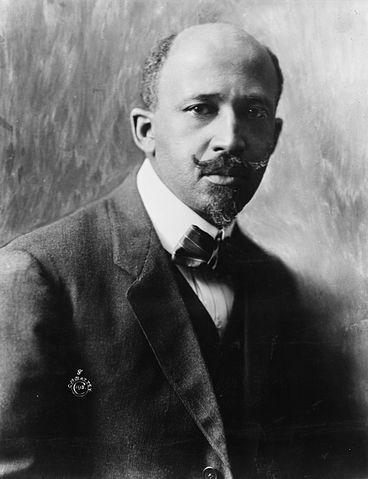You are here
Teaching Close Reading through Short Composition/Revision
Primary tabs

C.M. Battey (1873-1927), via the United States Library of Congress's Prints and Photographs division.
This lesson teaches close reading by having students compose, and then analyze, openings to biographical narratives about “great Americans.”
Printouts or electronic copies of student compositions.
Students bring to class segments of fiction or creative nonfiction (100-300 words) they have prepared, introducing a “great American” (very broadly defined). They then form into groups, and each group choses one story to revise and quote, focusing on the way its various elements (organization, vocabulary, selection of events) work together to cast a vision both for the character discussed, and for America as a whole. The class contributes to two larger discussions: that about the nature of literary evidence, and that about the constructedness of national narratives.
Prepare a brief lecture introducing the nature of literary evidence (words and phrases that are tied to larger patterns present throughout the text) and describing the “quotation sandwich” (summarize a quotation, quote it, and then analyze it.) This can be done the class before (especially if you have 50-minute classes) or at the beginning of class (in the case of 75-minute classes.)
[Note: as in all group activities, I find it particularly useful to insist that each student records or presents one aspect of the work. Therefore, the student who wrote the story should not mark the story, a different group member should type the analysis, and a fourth student (assuming groups of four) should read the analysis to the class.]
1) Each student should have already composed the first 100-300 words for a fictional narrative about a historical figure he or she feels represents distinctively American virtues, and posted this to the class discussion site. If you are not using a tech-enabled classroom, these narratives should be printed as well.
2) In class, students will be assigned into groups. Each group should choose one member’s paper for analysis (not necessarily the “best” story, but certainly the one they feel most comfortable analyzing.)
3) Have students mark the compositions, focusing on key words and phrases that might hint at the ways their characters represent larger “American” virtues.
4) Have students compose *and post online* (or write, if using a non-digital classroom) a short analysis of the chosen narrative, focusing in particular on the way that tensions or conflicts within the text recreate a particular vision of what it means to be American.
5) Have students read the paragraph they have written out loud to the class.
6) If possible, gently guide class discussion towards appreciation for both the diversity of ways texts reflect larger attitudes, and for the ways this process is mappable at even the smallest levels of the text.
7) Remind students that the close readings will remain online as an example to consult when creating their Close Reading Assignments.
Because this is not a creative writing course, I found it essential not to grade students’ actual compositions. Instead, the compositions received full credit as long as effort was made. The group analysis of the compositions could be graded, though I chose instead to give credit on a credit/no-credit basis.
The exercise was met with a certain degree of awkwardness, but by and large students enjoyed the change of pace and profited from the discussion. I found it particularly important to spend time chatting with each group individually, so as to provide further guidance as to what constitutes “literary evidence” and how it can be quoted.
This exercise was used in a lower-division, writing-flag literature course focused on national narratives. Students ranged from first-years to seniors, and came from a number of majors across campus.
-

- Log in to post comments

